Kerala Traditional Wedding Jewellery Designs


Blessed with white sandy beaches, a beautiful network of backwaters, blue hills and rainforests, Kerala is befittingly called ‘God’s own country’ . ‘Simple living and high thinking’ is a way of life here. The absence of overly lavish, opulent palaces is a testament to the ‘down to earth’ attitude even amongst royalty. The simplicity and elegance of Kerala is evident even in its traditional outfit – the ‘Kasavu mundu’ and ‘Settu sari’. The rich and the poor alike prefer to wear this gold-bordered beauty for special occasions, including weddings.
The women in Kerala are socially aware and form an active part of the administration. The new-age ‘Malayali Manga’ is an entrepreneur, a collector, a metro train driver, a Municipal Chairman and even climbs a coconut tree with elan. She strikes a perfect balance between the modern and the traditional. Nowhere is it more evident than at weddings!
Although gold is still largely preferred, others such as white gold, platinum, pearls and diamonds are also finding their way to the modern bride’s trousseau. Many Christian brides prefer diamond necklaces to complement their white wedding gowns, while gold is reserved for the reception when she changes into her ‘Mantrakodi’, a richly embroidered sari gifted by the groom.

‘Jadanagam’ which means ‘hair serpent’ is another hair embellishment borrowed from the neighbouring state, worn on the neatly plaited braid. Muslim brides also wear the Netti chutti, although some prefer the ‘jhoomar’, a beautiful Mughal inspired ornament worn on only one side of the hair partition. A Christian bride wears a lovely tiara that holds her veil in place.
Exchange of rings “Mothiram Mattal” during engagement is a custom followed by all religious groups in Kerala. Christians however, exchange rings during the wedding as well. Many Christian brides prefer diamond rings for engagement and gold ones for the wedding ceremony. gold rings embossed with the name of the spouse is the traditional preference. Although, platinum and diamond rings are gaining popularity.
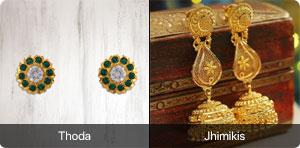
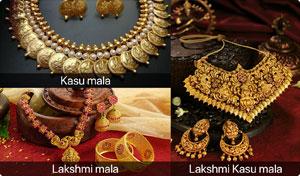
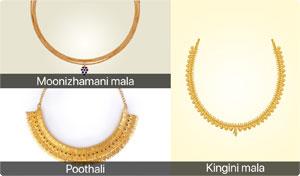
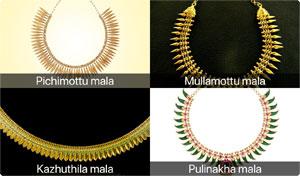
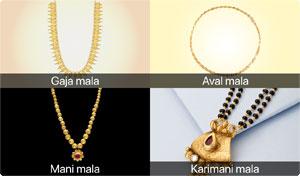
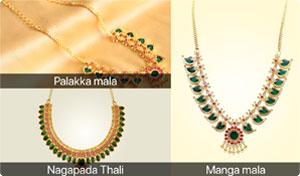
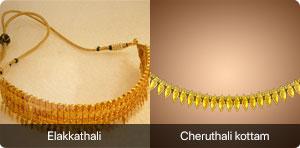
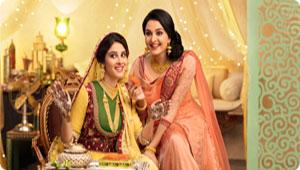
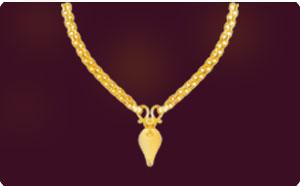
The ‘Pulinakha mala’ as the name suggests, resembles tiger claws and comes in many colours. It comes in both choker and long chain styles. ‘Kazhuthila mala’ made of leaf-shaped motifs can be made of plain gold or embellished with rubies and emerald. ‘Gaja mala’ has motifs of elephant head and is usually a long chain. ‘Manimala’ is made of round beads while ‘Avil mala’ has beads shaped like puffed rice. ‘Karimani mala’ as the name suggests has both gold and black beads and resembles the North Indian ‘Mangalsutra’. The armlet called ‘Vanki’ or ‘Aaram’ is mostly worn by Hindus and is not very common. It is inverted ‘V’ shaped with designs of a serpent or Hindu deities. It is usually embellished with coloured gemstones and hanging beads.
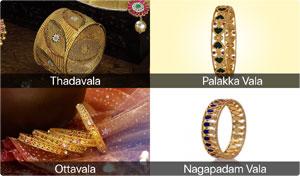
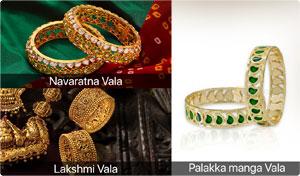
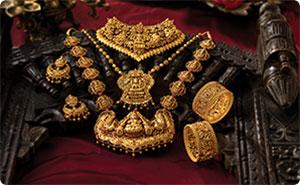
You will find all this and much more in the “Muhurat” floor at Kalyan Jewellers, a whole floor dedicated exclusively to bridal jewellery.